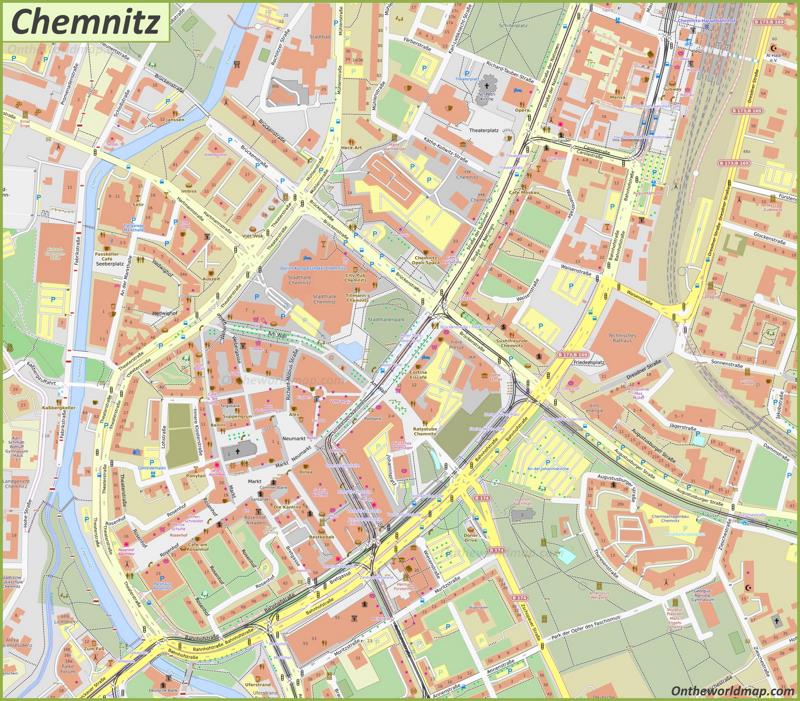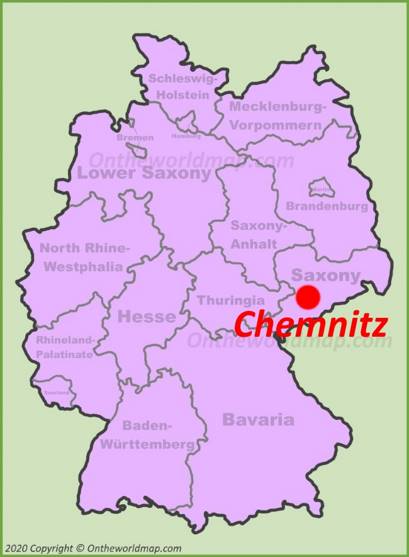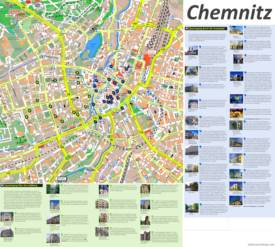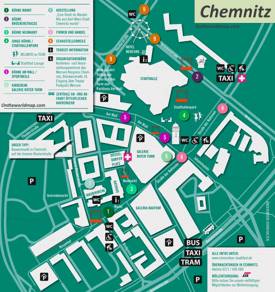Chemnitz Map
Description:
This map shows streets, trails, public toilets, houses, buildings, cafes, bars, restaurants, hotels, monuments, parking lots, shops, churches, museums, viewpoints, playgrounds, points of interest and parks in Chemnitz.
Size: 1972x1727px / 1.12 Mb
Author: Ontheworldmap.com
Map based on the free editable OSM map openstreetmap.org.
You may download, print or use the above map for educational, personal and non-commercial purposes. Attribution is required. For any website, blog, scientific research or e-book, you must place a hyperlink (to this page) with an attribution next to the image used.
Online Map of Chemnitz
About Chemnitz
Chemnitz is a city in Saxony, Germany, with approximately 245,000 inhabitants, making it the third-largest city in the state. Located at the base of the Ore Mountains, it was known as Karl-Marx-Stadt from 1953 to 1990 during the East German period. The city developed as a major industrial center during the 19th century, earning the nickname "Saxon Manchester" for its textile manufacturing prowess.
The Karl Marx Monument, erected in 1971, is a 7.1-meter-tall bronze head weighing 40 tons, making it one of the world's largest portrait busts. The Red Tower (Roter Turm), built around 1230, is the city's landmark and oldest structure, serving as the only remaining part of the medieval city wall. The Chemnitz Opera House, designed by Viennese architect duo Helmer and Fellner, opened in 1909 and represents one of Germany's finest Art Nouveau theaters.
The Chemnitz Industrial Museum occupies a former foundry and documents the city's industrial heritage and innovation history. The Gunzenhauser Museum houses one of Germany's most significant collections of modern art, with works by Otto Dix and other expressionist painters. Chemnitz University of Technology, founded in 1836, emphasizes engineering and technology.
The city's economy historically relied on mechanical engineering, textile machinery, and automotive industries. Following reunification, Chemnitz underwent significant restructuring and modernization. Today, it focuses on automotive suppliers, mechanical engineering, information technology, and micro-electronics. The city was designated European Capital of Culture for 2025.
The Facts:State: Saxony.
District: Urban districts of Germany .
Population: ~ 245,618 (2025).
Maps of Germany
Cities of Germany
Cities of Germany
States of Germany





